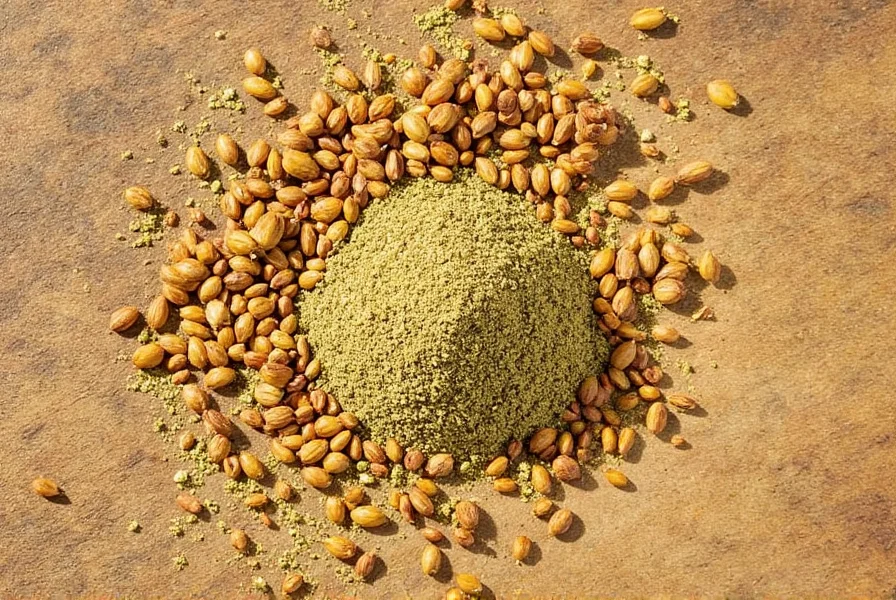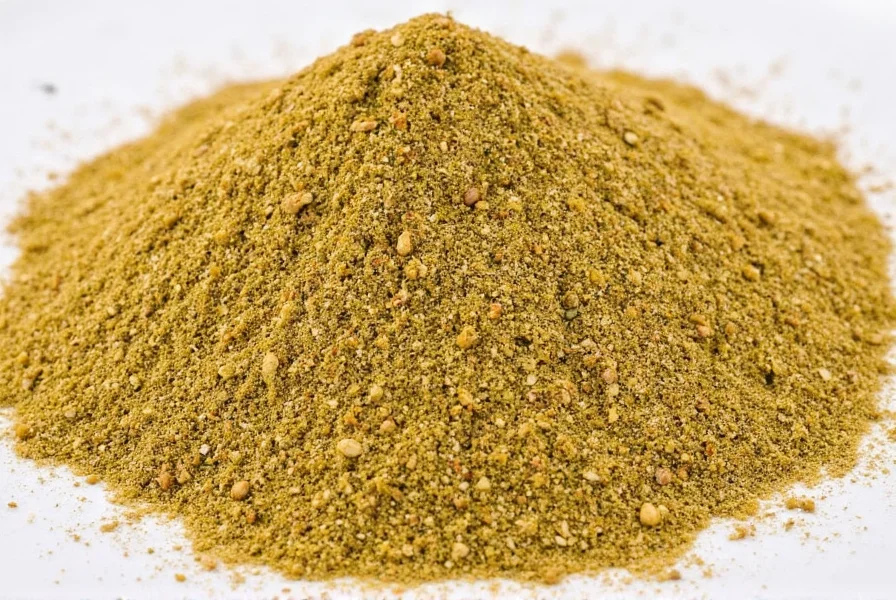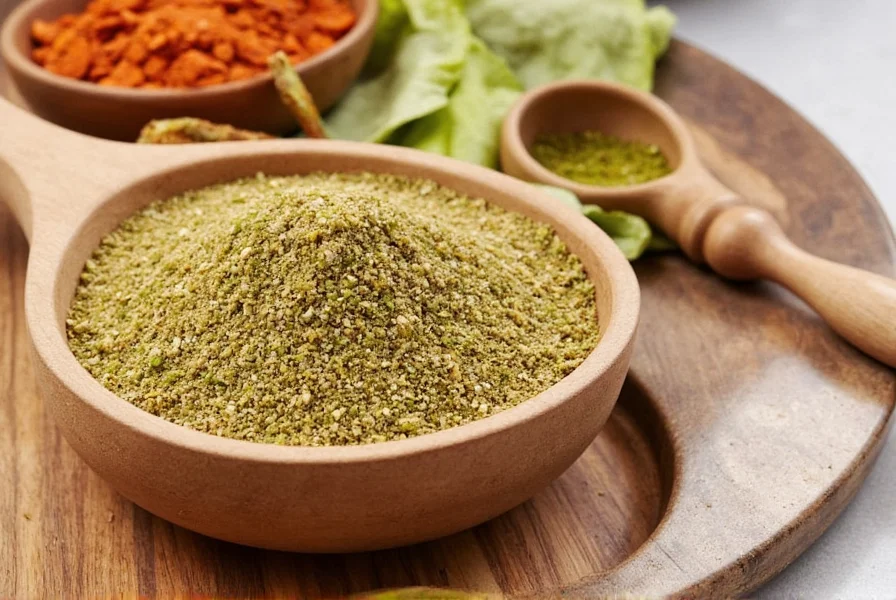Ground coriander is primarily used to add warm, nutty, and slightly citrusy flavor to a wide range of dishes. It's commonly used in Indian curries, Middle Eastern dishes, Mediterranean recipes, and Western baked goods. Whether you're making a spicy curry, a savory stew, or even sweet cookies, ground coriander can enhance the flavor profile with its unique taste.
Here are specific ways to use ground coriander in your cooking:
- Indian cuisine: Add 1-2 teaspoons to butter chicken sauce base along with cumin and turmeric. Essential in daal, biryani, and chana masala.
- Middle Eastern dishes: Mix into hummus for extra depth or use in shawarma marinades for chicken or lamb. Complements chickpeas and yogurt-based sauces perfectly.
- Mediterranean recipes: Sprinkle on roasted vegetables or add to tabbouleh for a bright, earthy flavor.
- Western cooking: Use in sausages, meatloaf, pickling spices, or gingerbread for a warm, spicy note.
For best results, add ground coriander early in the cooking process. For soups and stews, add when sautéing aromatics; for sauces, add at the beginning of cooking. Typical usage: 1/2 to 1 teaspoon per serving.
Practical Tips for Using Ground Coriander
- Start small: Begin with 1/2 teaspoon per serving and adjust to taste. A little goes a long way!
- Pair with complementary spices: Cumin, turmeric, cardamom, and cinnamon work well with ground coriander.
- Use in marinades: Mix with olive oil, garlic, lemon juice, and salt for flavorful chicken or vegetable marinades.
- Enhance soups and stews: Sprinkle into tomato-based soups or lentil stews for added warmth and complexity.
- Baking applications: Add to bread, cookies, or cakes for a unique twist, especially in recipes with warm spices.
Culinary Uses and Pairings
Indian Cuisine
Ground coriander is a key ingredient in garam masala and curry powders. It pairs beautifully with cumin, turmeric, and cardamom, creating rich layered flavors in dishes like butter chicken, daal, and biryani. For authentic flavor, add at the beginning of cooking to allow flavors to develop fully.

Mediterranean and Middle Eastern Dishes
In Middle Eastern cooking, ground coriander adds brightness to hummus, shawarma, and tabbouleh. It complements lamb, chickpeas, and yogurt-based sauces perfectly. For Mediterranean dishes, sprinkle on roasted vegetables or add to fish marinades for a citrusy note.
European and American Recipes
Ground coriander is used in sausages, meatloaf, and pickling spices. Some bakers incorporate it into gingerbread and spiced cookies for a warm, earthy note. Try adding 1/4 teaspoon to pancake batter for a unique breakfast twist.

Buying Guide: How to Choose the Best Ground Coriander
| Feature | Best Choice | Good Choice |
|---|---|---|
| Freshness | Look for airtight packaging and recent expiration date. Test by rubbing between fingers - should release strong, pleasant scent. | Avoid products that smell stale or musty. |
| Origin | Indian or Middle Eastern coriander typically has stronger, more robust flavor. | Congolese or other regional varieties may offer different profiles but may be less potent. |
| Purity | Choose pure ground coriander without fillers or additives. | Avoid blends unless explicitly labeled for specific recipes. |
| Package Type | Opt for vacuum-sealed or resealable bags for longer shelf life. | Jars can be convenient but may expose spice to air more quickly, reducing freshness. |
Top-rated ground coriander products include:
- McCormick Ground Coriander: Trusted brand for consistent quality and flavor. Ideal for everyday cooking.
- Sonora Farms Ground Coriander: Organic and ethically sourced. Perfect for health-conscious cooks.
- Penzeys Spices Ground Coriander: High-quality option for both home chefs and professionals.
Pro tip: Store ground coriander in a cool, dark place in an airtight container to maintain freshness for up to 6 months.
FAQs
How is ground coriander different from fresh coriander (cilantro)?
Ground coriander comes from dried seeds, while fresh coriander (cilantro) refers to the leaves. They have completely different flavors - ground coriander is warm and nutty, while cilantro is bright and citrusy.
Can I substitute ground coriander for fresh coriander?
No, they cannot be directly substituted due to different flavor profiles. If a recipe calls for fresh coriander (cilantro), use it as garnish. For ground coriander, use it as a spice in cooking.
How long does ground coriander last?
Properly stored in an airtight container away from light and heat, ground coriander maintains optimal flavor for 4-6 months. After that, it may lose potency but remains safe to use.
What's the best way to store ground coriander?
Store in a cool, dark place in an airtight container. Avoid storing near heat sources like stoves or ovens. For maximum freshness, consider keeping it in the refrigerator.
Conclusion
Ground coriander is a versatile spice that deserves a place in every kitchen. Its warm, nutty, and slightly citrusy flavor makes it an essential component in a wide range of recipes - from traditional Indian curries to modern baked goods. By understanding how to use it properly and choosing high-quality products, you can unlock its full potential in your cooking.











 浙公网安备
33010002000092号
浙公网安备
33010002000092号 浙B2-20120091-4
浙B2-20120091-4